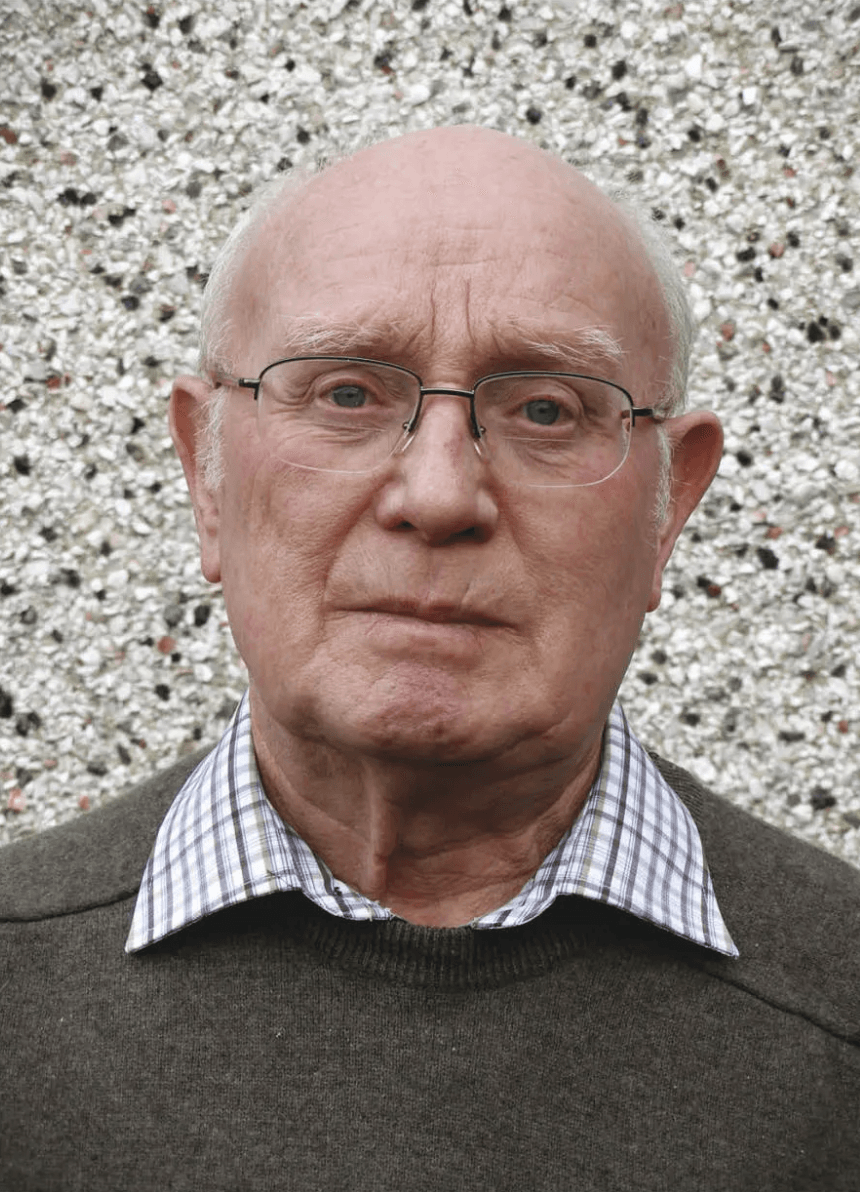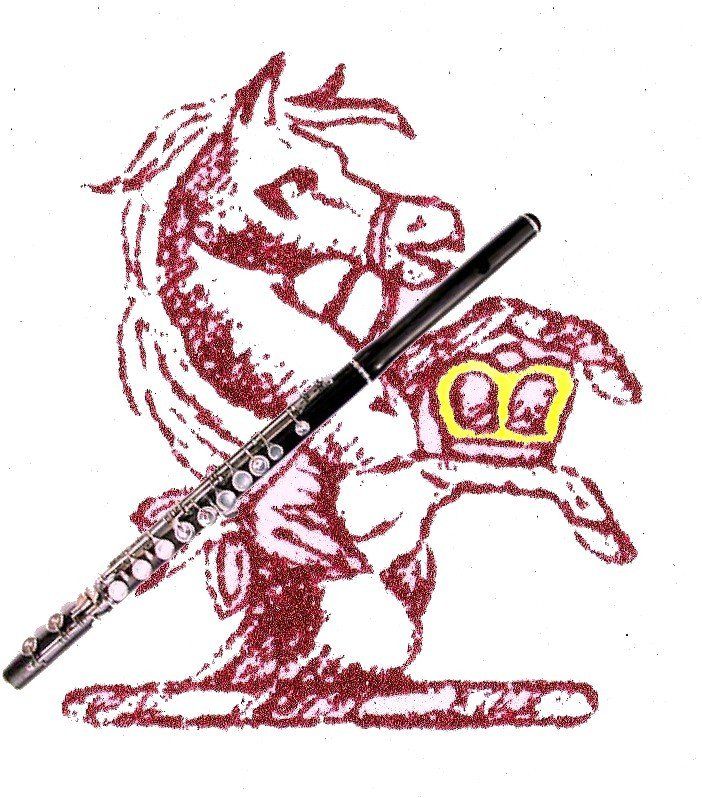British Flutemakers: Harry Seeley
Harry Seeley: Sixty Years a Flutemaker
Of post-war British flutemakers, few have enjoyed such a high reputation or been responsible for such a large quantity of flutes as Harry Seeley. Slightly younger than Albert Cooper and a contemporary of Ewen McDougall, Harry Seeley worked for thirty-seven years at Flutemakers Guild, the only employee to have neem there both at its foundation and its demise. In that time he established himself as one of the finest makers in silver, gold, and wood He was also responsible for countless repairs, alterations, and refurbishments to the extent that there can hardly have been a player around while he was active who didn’t benefit from his workmanship. Top flautists ordered new flutes from him, students sought him out for repairs, and younger makers learnt their trade at his side.

Harry Seeley traces his flutemaking back to a Scottish scoutmaster who organised a pipe band near his home in Tottenham, North London. Harry took up the pipes and made contact with the company that had made them, Henry Starke, which offered him an apprenticeship. A grammar-school boy, Harry might have stayed on but chose to leave at sixteen in 1948, encouraged by his parents who were glad to see that he’d found a job. Starke, a family-owned company founded in 1876, operated from a small workshop in Camden Town where its half-dozen or so employees made pipes and military fifes. Harry became an assembler, making and fitting keys to wooden bodies made downstairs in the turning shop. National Service took him away and when he returned, a friend working at Rudall Carte introduced him to that famous old company. Harry realised there was no progress to be made at Starke’s and joined Rudall Carte in 1956.
Unlike other flute manufacturers, such as those in Boston which are organised with a certain division of labour, Rudall Carte continued the British tradition of employing individual makers of piece-work, each responsible more or less for an entire flute. ‘You were told what the company wanted, like a wood flute or silver flute, and given the basic parts, and you made it,’ Harry explains. ‘And when you’d made it you were paid. The harder you worked the more money you earned. Certain parts would have been made by someone else. If it was a wood flute you’d be given the body and the materials for the strap and pillars. Pillars were made on a capstan lathe usually by apprentices. It was up to you to drill and mount the pillars and make the keywork.’ After that the maker had to take the flue right through to completion.

The keywork of one of Harry Seeley's last flutes, made for Patricia Morris. (Photograph by Robert Bigio.)
Because all the makers were on piece-work, non was available to teach Harry. Luckily he sat alongside Angus Harris, an experienced craftsman who showed him what to do. From having never seen a Boehm flute, Harry progressed quickly and after about a year made his first flute. ‘They gave me a box of old bits and said “Here you are, make yourself something out of that”,’ Harry recalls with amusement. ‘And I actually ended up making a flute.’ For all Harry’s self-deprecation it must have passed the foreman’s inspection for it was sold to someone in New Zealand, where perhaps it is still being played.
Each maker would have his own way of working and his own style within the general Rudall Carte pattern. The best makers were responsible for the most important flutes. ‘When I went to Rudall Carte there were two top men: Fred Handke and Frank Charlton, who were then quite elderly. If there was a need for the gold flute a thinned wood flute it would normally be made by Handke. Younger men such as Albert Cooper and Henry Green were also amongst the good makers.’
Harry’s work book records the various jobs he did, from repairing or altering keywork to making complete flutes. An order for flutes in Bb, and F from an Irish band provided a particularly unusual education. The band still used the Guards model, with keywork that was a cross between the Boehm and 1867 systems. ‘I sat next to Frank Charlton,’ Harry explains, ‘and he made all the Bb flutes and I made the ones in F, and he showed me how to do it. Not many of those were made. I doubt if they were ever made again.’ Of all the various jobs, Harry particularly enjoyed bringing an old instrument back to life, for instance by transferring the keywork of a high pitch flute to a new modern pitch body, a job that would take about a week and a half. His work book shows that on 5 January 1958 he finished converting a Radcliff flute to a Boehm system after a hundred hours’ work. Making a flute from scratch generally took slightly longer: three weeks or more.
Harry’s talent was such that within five years he was himself making thinned wood flutes. But Rudall Carte was not the company it had once been. Having been bought by Boosey & Hawkes, it was being starved of investment and had to keep asking its parent company for equipment and material. ‘They never upgraded any machines, ever,’ Harry recalls. ‘We were still using treadle lathes.’ When Boosey & hawkes hit tough times financially in 1960 its management decided to bring all the manufacturing of its various subsidiaries under the roof of its own factory at Edgware, in north London. This hardly suited, Harry who was by then living south of the river, and went down no better with many of his colleagues.
In 1961 seven makers left Rudall Carte, including Harry Seeley, Angus Harris, and the foreman Ewen McDougall, to set up a new company which they called Flutemakers Guild. Through auspices of the Lord Mayor of London, who had been a flautist in his youth, the makers approached Charles Stanley Padgett, Prime Warden of the Goldsmiths’ Company and owner of a gold and silversmithing company. Padgett supplied finance and a workshop in his premises at Broadwick Street, Soho ,and after 1974 in Shacklewell Road, where the flutemakers had the use of lathes and equipment already owned by the company. All aspects of flute manufacturing, from the acquisition of silver tubing to engraving of the highest calibre, could be done on the premises. Now the makers enjoyed the freedom of producing flutes as they liked under the foremanship of Ewen McDougall, who was responsible for the first of their flutes but then concentrated on headjoints.
The flute market in the 1960s was very different to the one we know today. There were no flute shops and only a handful of manufacturers to choose between. A player looking for a professional instrument might place an order with Haynes or Powell, who had long waiting lists, or take a trip to the Flutemakers Guild premises, inside the door of which lay a tiny enclosure furnished with a desk where customers could discuss their requirements and place their order. Players might ask for different keywork, extra touch -pieces, elaborate decoration, or even an old system. Harry particularly remembers having to rebuild a gold 1867 system flute, a task that was unusually challenging. The 1867 system had long since lost its popularity, so there were no patterns or castings to work with. The job was not made easier by the fact that the keywork is complex and has to be spot on for the flute to work properly – one of the reasons perhaps that it lost out to the Boehm-system. A gold Boehm-system flute that Harry made in 1979 featured a similarly elaborate acanthus design on its keywork and a garnet mounted in its button. All the components, such as saddles key arms and cups had to be made by hand out of gold strip. Working on such a project, Harry says, was a worry and responsibility until finished. The result is a tour-de-force of flutemaking, a delight to the eye and the ear.
At first the style of Flutemakers Guild flutes was in the Rudall Carte tradition, but with the majority in silver as wood went out of fashion. It was only in 1966, after the company had completed more than a hudred flutes, that the first order came in for one in wood. Silver flutes had soldered tone-holes and keywork made entirely by hand. A significant improvement came in 1983 with the introduction of the Cooper scale, and in the later 1990s as wood flutes returned to fashion Harry’s experience at Rudall Carte came into its own.
As well as the original founders, Flutemakers Guild in the 1960s and 1970s took on a number of trainees, including Howel Roberts and Martin Gordon, both now independent makers, and Chris Bouckley who remained with the company almost to the end, which came into view in the 1990s. Despite the high quality of the product, the number of makers at Flutemakers Guild dwindled. Ewen McDougall retired in 1983; Angus Harris offered more money, took a job with Ford. Now the remaining makers were reluctant to bring in a novice. Apart from the difficulty of training someone up to the required standard, Harry says, ‘I didn’t think it was fair to bring a youngster into a trade that would eventually die.’ The market was changing, with Japanese companies sending good flutes as stock for new specialist shops where flautists could pick their new flute off a shelf. For a while Seeley and Bouckley were the only makers at the workshop, then Harry was left on his own. Since Ewen’s departure Harry had been making head joints to go with his flutes, so he was happy to continue doing everything. His fame and skill ensured he was kept busy. He was now particularly in demand for his thinned wood flutes.
Thinning a wooden body is a delicate and time-consuming job, milling away the wood while leaving the tone-holes proud, but it produces a thin-wall, about half the normal thickness, that resonates as though by magic in a player’s hands. Harry regards these last flutes as the finest of his career, built with all his experience and utilising the Cooper scale. He planned to go on working until he hit seventy, and then perhaps have a lathe in a shed at home, but in 1998, as Harry recalls, ‘There was I sitting at my bench one day, minding my own business, when the Good Lord pointed his finger.’ He suffered a stroke that finished his career and brought an end to Flutemakers Guild. He still had on his books ten orders for thinned wood flutes.
During his time at Flutemakers Guild, Harry Seeley made about 120 flutes to add to his fifty-six for Rudall Carte. He was responsible over the course of a fifty-year career for countless transplants, refurbishments, and repairs. All those who have seen his work will know that he ranks amongst the finest, his style neat and right, his workmanship exemplary. There is no arrogance or dogmatism in his character and this is reflected in his flutes, which demonstrate that the ideal personal qualities for a flutemaker are honest, pragmatism, and a natural desire to do the very best you can for the job’s sake. The list of customers for whom he made flutes reads as a Who’s Who of British flautists. Many of the thinned wood flutes from near the end of his career went to players in continental Europe, particularly Germany. And his reputation is secure further afield. In 2006 David Shorey of Antique Flutes in California listed one of Harry’s flutes, wood one-piece body down to B tuned to the Cooper scale, with Brossa F sharp and G trill, ‘We felt,’ Shorey says, ‘that this instrument was fully the equal of the best of the Rudall Carte wooden flutes, which we believe to have been the best wooden Boehm flutes ever made, unless one specifically wanted a French flute. This undeniable treasure is all the more exciting as the work of a modern flutemaker.’ Harry’s renown is not restricted to past of the present generation: for instance, when the young Canadian flautist Aysha Wills tried that same flute ages eleven she fell instantly in love. ‘A sound came out,’ she says, ‘that I never knew I could make on a flute. Big and warm, easy to play yet with amazing depth and colour.’ She has subsequently used the flute in numerous recording sessions and concerts. ‘Harry may be retired, but his flutes are still working and sounding brilliant!’ she says, adding, ‘I think Harry’s legacy has been criminally neglected.’
If Harry Seeley is not as well known as, for instance, his Rudall Carte associate Albert Cooper, that may be because he never had the desire to set up on his own. He says he hadn’t the money to establish a workshop or the contacts to give himself an entrée into the musicians’ world. This may be partly an example of his humility, but the consequence is that Harry’s flutes do not bear his name. Nevertheless they are treasured by their owners and sought by those in the know. There can be little doubt that, like his former colleagues Fred Handke and Albert Cooper, Harry Seeley’s name will forever be associated with hand-made flutes of the highest quality.


